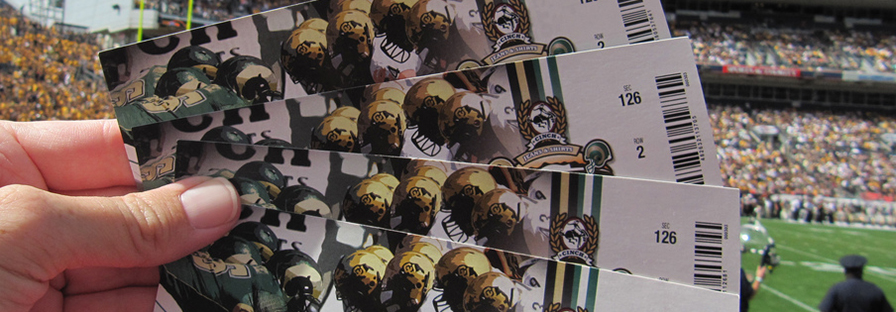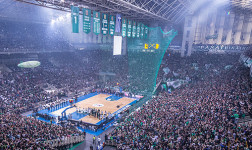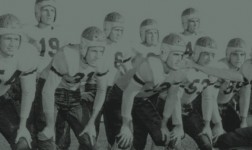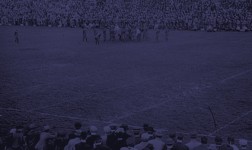By Dr. Chad McEvoy
 We have all gone online to shop for flights for an upcoming trip, put off buying for whatever reason, and then checked back a couple hours or days later to find that prices jumped by $50 or more for the same flight. Perhaps you’ve been one of the fortunate to see the price decrease considerably in that same situation. We know, of course, that this is typical in the airlines’ dynamic pricing model, where prices on flights are adjusted daily, or even more frequently, based on supply and demand conditions.
We have all gone online to shop for flights for an upcoming trip, put off buying for whatever reason, and then checked back a couple hours or days later to find that prices jumped by $50 or more for the same flight. Perhaps you’ve been one of the fortunate to see the price decrease considerably in that same situation. We know, of course, that this is typical in the airlines’ dynamic pricing model, where prices on flights are adjusted daily, or even more frequently, based on supply and demand conditions.
Any undergraduate microeconomics course teaches about the concepts of supply and demand, and their interrelationship with the price for products and services. In short, when supply is high and demand is low, these market conditions will drive prices lower. Conversely, when supply is low and demand is high, prices will tend to rise. The airlines, as well as other industries like hotels for example, have utilized these principles in making ongoing pricing adjustments for many years.
More recently, professional sports teams have begun to implement dynamic ticket pricing strategies. The industry leaders in this area were the San Francisco Giants, who partnered with Austin-based QCue to integrate dynamic pricing on some seating sections in 2008 and 2009. QCue, and other similar firms, use statistical algorithms to predict optimal ticket prices based not only on supply, or tickets available for a particular game, but also on factors influencing demand such as the on-field performance of both the home and visiting teams and even conditions like anticipated weather or traffic. In the few years since, more than one-half of Major League Baseball teams have also adopted dynamic pricing in at least some seating areas in their facilities.
Dynamic ticket pricing is not a completely novel concept in sport, but rather represents an evolution of variable ticket pricing, which became trendy in sports in the 1990s. With variable pricing, sports organizations were getting away from the notion of pricing all games at the same level and instead created a finite number of price points, typically ranging from two to four, based on the anticipated demand for a sporting event. Teams would keep a number of a games at a “regular” price, but then raise the price by several dollars per seat for “prime” games that were expected to have high demand, such a key rivalry game, and then lower prices for “value” games that might be weaker draws due to the day of the week or a low-profile visiting team. Many colleges have done this for years, such as raising the price of the homecoming football game by five-to-ten dollars above the price for other games.
A limitation to variable pricing is that these price levels are often established months before the season even begins and are static. They don’t fluctuate over time based on shifts in supply and demand, and thus aren’t able to adapt prices to reflect increased demand when the home team is on a winning streak. This limitation to variable pricing has brought about the rapid increase in the use of dynamic pricing recently, although it should be noted that most teams using dynamic pricing also use variable pricing as a means for establishing initial price points, which are then adjusted dynamically over time based on supply and demand.
In the past two years, college athletic programs have begun to implement dynamic pricing of tickets. QCue clients University of California-Berkeley and Georgetown University, along with Digonex clients University of South Florida and University of Washington are among the first schools to use dynamic ticket pricing in football and/or men’s basketball. David Gravenkemper, Assistant Athletic Director for Ticket Sales and Service at the University of Washington, spoke of their experiences implementing dynamic pricing at UW men’s basketball games this past season at the recent SportsBusiness Journal Ticketing Symposium in Brooklyn. According to Gravenkemper, Washington chose to partner with Digonex and adopt dynamic ticket pricing in order to not only grow revenues, but also to price their tickets more efficiently.
Pricing is one of the most challenging pieces of the marketing/sales mix for any organization. Price your product too high and it won’t sell, leaving an arena or stadium with many empty seats. Pricing too low remedies that problem, but the organization then fails to maximize revenue that could have generated. If you sell a ticket for $30 that could have sold for $100, secondary market brokers are likely to yield the $70 gap that the team should have been able to capture. In a college athletics environment where revenue generation is crucial and the secondary ticket market is more effective than ever, athletic departments need to price efficiently in an attempt to maximize revenues, as Gravenkemper discussed recently at the SportsBusiness Journal Ticketing Symposium.
Gravenkemper also noted that potential customer backlash, both among season ticketholders and donors, as well as the general public and media, is a key barrier holding many athletic departments from beginning to use dynamic pricing. He said, however, that Washington did not receive as much negative feedback as some expected. With season ticketholders and donors, a primary concern is price integrity. Organizations want to be careful to not alienate these loyal customers by dynamically reducing prices below what season ticketholders pay. Athletic departments considering using dynamic pricing should note that third-party vendors like Digonex and QCue can accommodate price floors in their pricing recommendations should schools choose not to drop prices below certain thresholds. The limitation in doing so, however, is that it restricts the ability to sell more tickets at a lower price to yield more revenue in situations when supply outpaces demand for a particular game.
Gravenkemper indicated Washington was pleased with the success of their first season using dynamic ticket pricing and that the school would implement it for both football and men’s basketball in the upcoming year. Similarly, a recent QCue press release noted that Georgetown “generated hundreds of thousands of dollars in new revenues” from using dynamic pricing with their men’s basketball program this past season. Based on the recent successes of Washington and Georgetown, as well as the continuing importance of revenue generation in college athletics, I anticipate seeing dozens of other Division I athletic programs beginning to implement dynamic ticket pricing over the next couple years. By comparison, the growth of outbound ticket sales programs exploded from just a few schools in the middle of the last decade to well over one hundred schools at present, despite being far costlier to develop based on staffing and other resource needs. As dynamic pricing can be adopted with far fewer resources, look for this trend to grow at an even faster rate.
Dr. Chad McEvoy is a Research Advisor for Winthrop Intelligence and Professor of Sport Management in the David B. Falk College of Sport and Human Dynamics at Syracuse University.





